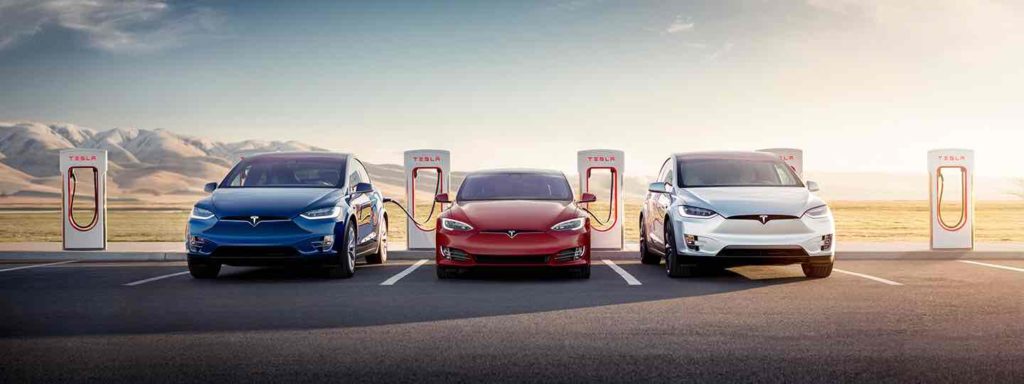Elon Musk is a great name in technology. Whether we talk about Space or EV cars, no one can forget SpaceX and Tesla cars. Tesla S Plaid is a hot topic nowadays. Tesla phones are also coming to the phones industry. Tesla seemed to have overtaken the news in recent years. It has been portrayed as the savior of the aging automobile industry. Granted, some of the news has been concerning, particularly when it comes to Tesla’s CEO, Elon Musk. Despite this, the electric car industry has succeeded in establishing battery-powered vehicles as a viable competitor, not only as an alternative to conventional automobiles. Today, I’m going to cut through the hype surrounding the green revolution by looking at the life cycle of Tesla cars to see if they’re the most environmentally friendly and emissions-free mode of personal transportation. In this post, I will tell you, is Tesla environmentally friendly?
Table of Contents
ToggleIs Tesla Environmentally Friendly?
1. Manufacturing
For processing and production, all cars need the extraction of raw materials. As a result, every conventional and electric automobile has an impact on the environment even before it is driven. However, according to a two-year study on the life cycle of electric vehicles undertaken by the Union of Concerned Scientists, this impact is typically 68 percent more emissions heavy for long-range electric automobiles like Tesla. This is owing in part to the energy-intensive process of obtaining rare metals, which are used in Tesla’s lithium-ion battery as well as lighting and onboard electronics. And the actual hunt for and extraction of rare elements can be a filthy business.
WIRED magazine’s Lizzie Wade points to China’s Jiangxi mine, which digs gigantic eight-foot tunnels into the ground and then fills them with poisonous chemicals to extract a microscopic amount of rare earth. Wade estimates that only 0.2 percent of what is extracted from the ground is utilized, while the remaining 99.8% is contaminated and put back into the environment.
To extract resources, mining companies use energy-intensive coal-fired or gas-powered equipment, resulting in substantial amounts of greenhouse gas emissions. When we look at the manufacturing step of Tesla’s cars, we see that it does not begin in the much-hyped Gigafactory. Rather, the metals used in Tesla’s elegant design come from a filthy extraction process halfway around the world.
So in general, the manufacturing process of a Tesla car is much dirtier emissions-wise than a conventional car.
2. Movement of the car
According to our research, the manufacturing process of a Tesla car produces far more pollution than a standard car. But it soon changes once the automobile is driving. The Union of Concerned Scientists reported in a 2015 research of electric automobiles that after only eighteen months of driving, battery-powered cars make up for the high environmental cost of manufacture.
However, this varies greatly depending on where you reside because electric cars still emit emissions; they just don’t come out of their tailpipes.
3. Type of grid
The environmental impact of a Tesla is determined by the sort of grid it is connected to. If it relies on dirty energy sources, the car’s miles per gallon equivalent will most likely be lower, such as in Colorado, where the equivalent fuel efficiency is roughly 35 mpg. However, in California, where renewable energy is abundant, driving a Tesla might translate to more like 87 miles per gallon. Overall, as compared to electric vehicles like Tesla, gas-powered cars emit about twice as many emissions throughout the course of their lifetime on the road, however this is dependent on where electric cars plug into the grid.

4. Operation’s waste end
Finally, Tesla does a good job at reusing used materials in its operations. Tesla’s CTO, JB Straubel, told shareholders that all of [their] discarded cells, modules, and battery packs are recycled and would be recycled. However, information is scarce. According to NPR and Tesla’s website, they recycle around 10% of the battery in-house and send the other 60% to a third party for recycling. Currently, they recycle approximately 70% of the battery.
This is another essential way to decrease waste and the company’s effect because it not only diverts needless waste from landfills, but it also lowers manufacturing costs by using raw materials that are already available.

The bottom line: Is Tesla environmentally friendly?
Electric vehicles are in the headlines a lot in recent years. Manufacturers of electric vehicles are becoming more competitive with each passing day. Tesla’s electric automobiles are, on the whole, more energy efficient and environmentally friendly than typical gas-powered vehicles. Tesla pushed battery-powered automobiles into the mainstream as a viable alternative to conventional cars, but their strategy is still environmentally constrained.
Buying a new automobile is unquestionably more wasteful than driving what you already have, and buying electric vehicles and supporting a major corporation is hardly the answer to climate change, even though an electric vehicle may reduce your carbon footprint.

Should you buy a Tesla right now to rescue the environment? No, I doubt it. To me, it makes more sense to put my time and money towards organizations which take measures for climate sustainability. Electric cars have a place in the climate movement, but they must be used in conjunction with a variety of other measures in order to achieve long-term sustainability.
I hope you got the answer of is Tesla environmentally friendly? You can share your thoughts in the comment section. For more articles on the automotive industry, visit our website.

